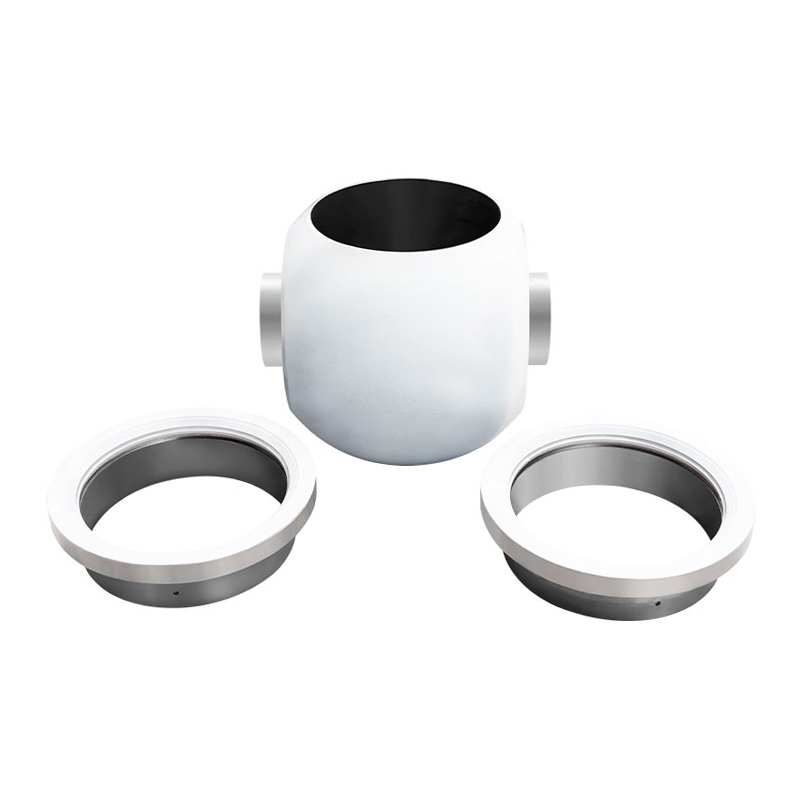In the industrial sector, the reliability and precision of ball valve components are essential for ensuring the safe and efficient operation of fluid control systems. As a manufacturer committed to quality, producing ball valve components under ISO standards provides assurance that products meet rigorous requirements for consistency, safety, and durability. This article explores the significance of ISO certification in the manufacturing process and highlights key types of ball valves, including the expansion ball valve, 3 piece flanged ball valve, and ball valve one piece body.

Importance of ISO Standards in Ball Valve Manufacturing
ISO (International Organization for Standardization) standards are internationally recognized guidelines that specify the requirements for quality management systems, product specifications, and testing procedures. When ball valve components are manufactured under ISO standards, it means that the entire production process follows strict quality control protocols. This helps reduce defects, enhances product uniformity, and ensures compliance with industry regulations.
For manufacturers, adherence to ISO standards provides a structured approach to managing risks and improving operational efficiency. It also supports traceability of materials and processes, which is crucial for maintenance and quality assurance in downstream applications.
Expansion Ball Valve: Design and Applications
The expansion ball valve is a specialized type designed to accommodate thermal expansion and contraction within piping systems. These valves are engineered with a unique mechanism that allows for controlled movement while maintaining a tight seal. This capability is particularly useful in industries where temperature fluctuations can cause pipe deformation, such as in chemical plants and power generation facilities.
Manufacturing expansion ball valves under ISO standards ensures that all components—from the valve body to the sealing elements—are produced to exact specifications. Precision machining and material selection are critical to achieving the valve's functionality, preventing leaks and less wear over extended service periods.
The expansion ball valve is also designed to integrate seamlessly with various piping layouts, providing flexibility for system designers. When produced with certified quality controls, these valves contribute to the overall reliability of fluid transport and control systems.
3 Piece Flanged Ball Valve: Versatility and Maintenance
The 3 piece flanged ball valve is a popular configuration in many industrial applications due to its ease of maintenance and installation. This type of valve consists of three separate components: two end caps and a central body that houses the ball mechanism. The flanged ends facilitate secure connections to piping systems using bolts, making the valve accessible for disassembly without disturbing the pipeline.
Producing a 3 piece flanged ball valve under ISO standards means that each part undergoes detailed inspection and testing. The flanges must conform to specific dimensional tolerances to ensure proper alignment and sealing. The valve’s internal components, including the ball and seats, require precision machining to maintain smooth operation and effective shutoff.
This valve design is favored in situations where regular maintenance is necessary, such as in water treatment plants and industrial processing lines. The ability to remove the valve body without dismantling the entire pipeline less downtime and reduces maintenance costs. ISO-compliant manufacturing processes help guarantee that the valve components will perform reliably throughout their lifecycle.
Ball Valve One Piece Body: Simplicity and Strength
The ball valve one piece body design offers a simpler and more compact alternative compared to multi-piece valve assemblies. As the name suggests, this valve features a single-piece body that houses the ball and other internal components. This design eliminates the need for body joints or flanges, reducing potential leak points and enhancing structural integrity.
Manufacturing ball valves with a one piece body under ISO standards ensures that the entire valve unit meets quality benchmarks from material selection to final testing. The machining process for a one piece body requires high precision to achieve the necessary internal contours and smooth surface finishes, which are critical for reliable sealing and operation.
This design is commonly used in applications where space is limited or where the system requires a lightweight valve solution. The simplicity of the one piece body can also improve durability under high-pressure conditions. Adherence to ISO standards in production supports consistent quality and helps meet the stringent demands of industrial environments.
Quality Control and Testing Procedures
Ball valve components manufactured under ISO standards undergo a series of tests to verify their performance. Common tests include pressure testing, leak testing, dimensional inspections, and material certification. These tests are conducted at various stages of production to detect any defects early and ensure that the final products meet specified criteria.
Manufacturers implement traceability systems that record batch information, material sources, and test results. This data is vital for addressing any quality concerns and supports compliance with regulatory requirements in different industries.
Manufacturing ball valve components under ISO standards provides a structured framework to achieve consistency, safety, and reliability. Whether it is an expansion ball valve designed to accommodate thermal movement, a 3 piece flanged ball valve built for ease of maintenance, or a ball valve one piece body that offers strength and simplicity, ISO certification plays a key role in maintaining product quality.
Clients and system integrators benefit from valves produced to these standards through improved operational efficiency and confidence in product performance. As industry requirements continue to evolve, manufacturers adhering to internationally recognized quality systems remain well-positioned to meet diverse application needs with dependable ball valve solutions.